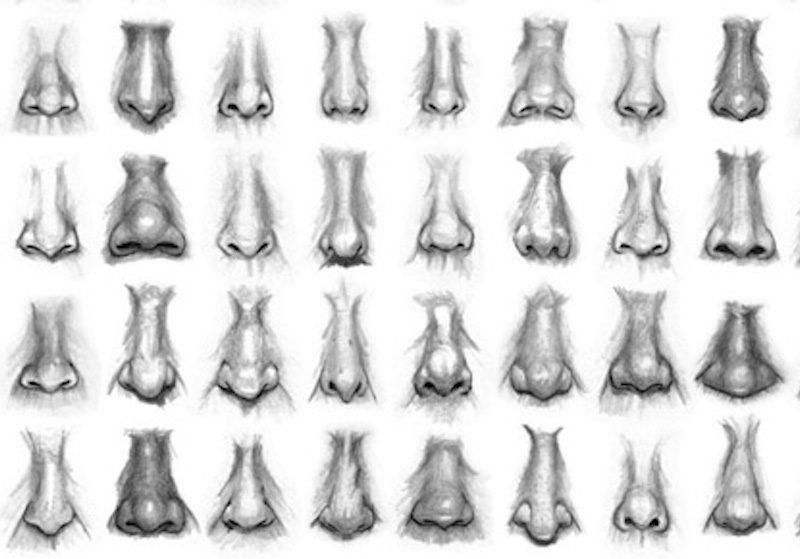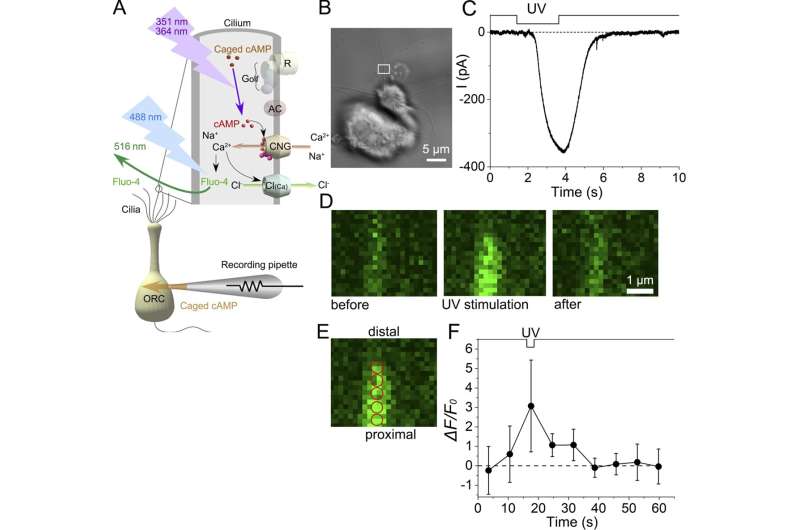Credit: Weiss et al.
If humans don’t need olfactory bulbs to smell, the brain may have more plasticity, or ability to adapt, than previously thought.
“The developing human brain can overcome significant alterations with minimal functional impact, and this may be one example of them,” said Noam Sobel, senior author of the study. “Under this conservative interpretation, our discovery does not teach us how olfaction does work, but rather only how olfaction can work.”
People with no olfactory bulbs typically suffer from anosmia, or an inability to smell. During olfaction, odor molecules activate sensory neurons in the nose. Those neurons then send signals to the brain where each odor is mapped in activation patterns of small neural structures called glomeruli within the olfactory bulb. These glomeruli maps are considered essential to smell.
Sobel’s team first stumbled upon a person who could smell despite lacking apparent olfactory bulbs while reviewing MRIs of healthy, left-handed female volunteers for a different smell study. Upon reviewing just nine more MRIs of left-handed women, the researchers found another woman missing discernible olfactory bulbs.
“A pleasant surprise was then finding this in the Human Connectome Project,” says Sobel. When the researchers reviewed 1,113 MRIs made public through the Human Connectome Project, they found three more young women – one left handed – who lacked clear olfactory bulbs but could smell. Together, the data indicate 0.6 percent of women and 4.25 percent of left-handed women lack apparent olfactory bulbs yet can smell. Lack of apparent olfactory bulbs was not found in any men.
“Replication within a publicly available dataset adds a lot of credibility to the finding. This is not just some oddity that shows up only in our hands,” says Sobel.
In hopes of finding a physical explanation, the researchers ran even more scans of the original two volunteers and of a 33-year-old woman with no identifiable olfactory bulbs and congenital anosmia. After MRIs, diffusion MRIs, ultra-high definition 3D imaging, and whole-brain voxel-based morphometry, they concluded that yes, all three of the women had no visible olfactory bulbs but otherwise normal brain structures outside the olfactory system.
The three volunteers also agreed to smell tests. These included subjective tests and objective tests that measure whether someone can pick up a scent, can identify scents, and can distinguish between scents. The two women who said they could smell performed within the norm for people their age while the woman with congenital anosmia failed to detect most odors.
The researchers then wanted to explore how the world smells to these individuals. They asked the three volunteers and 140 women of similar age to smell 10 odorants and use visual analogue scales to rate each odor by 11 descriptors. This generated enough data points to create an olfactory perceptual fingerprint that visually and numerically represents how each person perceives scents. The olfactory perceptual fingerprints of the two women who could smell without apparent olfactory bulbs fell within the norm of the study. Yet, the two women were unusually similar to each other in their smell perceptions, ranking closer than 96 percent of any other two participants.
“The simplest interpretation of our findings is that these women were born without an olfactory bulb, but thanks to the extreme plasticity of the developing brain, they developed an alternative glomeruli map somewhere else in the brain, not in the olfactory bulb,” says Sobel. “Although such plasticity is amazing, it is not out of the realm of what we have seen in human development.”
In future research, Sobel and his colleagues would like to screen larger numbers of people to learn more about this phenomenon. Moreover, given that people can smell without typical olfactory bulbs, they are investigating whether congenital anosmics can learn to smell.
Reference
Weiss et al. (2019) Human Olfaction without Apparent Olfactory Bulbs. Neuron. DOI: https://doi.org/10.1016/j.neuron.2019.10.006
This article has been republished from the following materials. Note: material may have been edited for length and content. For further information, please contact the cited source.
Source: The People Who Can Smell Without Any Olfactory Bulbs | Technology Networks




















































